The Chicago White Sox are a professional baseball team based in Chicago, Illinois. As a member of the American League Central Division in Major League Baseball (MLB), the White Sox play their home games at Rate Field on Chicago's South Side. Along with the Chicago Cubs, they represent one of two MLB teams located in Chicago.
1900: Move to Armour Square
In 1900, Charles Comiskey moved the St. Paul Saints to Armour Square in Chicago, renaming them the Chicago White Stockings.
1900: Relocation to Chicago
In 1900, the St. Paul Saints relocated to Chicago and became known as the Chicago White Stockings.
1901: Inaugural Season
1901 marks the start of the White Sox's win-loss record keeping.
1901: St. Louis Browns as Milwaukee Brewers
In 1901 the St. Louis Browns were the Milwaukee Brewers.
1901: White Sox and Tigers Join American League
In 1901, both the White Sox and Detroit Tigers joined the American League after being charter members of the original Western League, marking the beginning of a long-standing rivalry.
1901: Charter Franchise
In 1901, the Chicago White Stockings became one of the American League's eight charter franchises when the AL achieved major league status.
1901: First AL Season and Championship
In 1901, the Western League became the American League, and the White Stockings won the first AL season championship.
1906: First World Series Appearance
In 1906, the Chicago White Sox made their first World Series appearance, defeating the Chicago Cubs in six games.
1906: White Sox Upset Cubs in World Series
In 1906, the White Sox upset the favored Cubs in the World Series.
1910: Move to Comiskey Park
In 1910, the White Sox moved from South Side Park to Comiskey Park.
1912: Debut of the "S" Logo
In 1912, the White Sox introduced a large "S" logo in a Roman-style font, with an "O" inside the top loop and an "X" inside the bottom loop.
1917: Second World Series Win
In 1917, the White Sox won their second World Series, defeating the New York Giants in six games.
1919: Black Sox Scandal
In 1919, the White Sox appearance in the World Series was marred by the Black Sox Scandal, where players conspired to fix games and lose to the Cincinnati Reds.
1919: Loss in World Series
In 1919, the White Sox lost the World Series to the Cincinnati Reds in eight games, amid speculation of a fixed series.
1919: Ill-fated Campaign
The 1919 campaign was ill-fated.
1920: Black Sox Scandal Investigation
In 1920, a criminal investigation into the 1919 World Series occurred, leading to commissioner Kenesaw Mountain Landis banning eight players for life despite their acquittal.
1929: Bob Elson Becomes Voice of the Sox
In 1929, Bob Elson, known as the "Commander", became the voice of the White Sox.
1936: Improved American League Standing
In 1936, the White Sox finished in the upper half of the American League.
1939: Ownership Passes to Grace Comiskey
After the death of J. Louis Comiskey in 1939, ownership of the White Sox was passed down to his widow, Grace Comiskey.
1943: WGN Abdicates Rights
In 1943, WGN (720) abdicated their rights to the White Sox after 16 seasons due to children's programming commitments from their network, Mutual.
1944: First Exclusive Radio Rights Granted
In 1944, the White Sox first granted exclusive rights for radio broadcasts.
1946: Continued Success
In 1946, the White Sox continued to finish in the upper half of the American League.
1949: Introduction of "SOX" Gothic Script Logo
In the 1949 season, the White Sox introduced the "SOX" logo in Gothic script, diagonally arranged with the "S" larger than the other letters. The primary color was black.
1951: Start of Sustained Success
1951 marked the beginning of a 17-year period of sustained success for the White Sox.
1952: All Games Broadcast on WCFL
In 1952, the White Sox started having all games broadcast on WCFL (1000).
1956: Ownership to Dorothy and Chuck Comiskey
In 1956, ownership of the White Sox was passed down to Grace Comiskey's children, Dorothy and Chuck.
1957: Al López Becomes Manager
In 1957, Al López became the manager of the White Sox.
1958: Dorothy Sells Majority Share to Bill Veeck
After the 1958 season, Dorothy Comiskey sold a majority share of the White Sox to a group led by Bill Veeck.
1959: World Series Appearance
In 1959, the White Sox made their first World Series appearance since the Black Sox Scandal but lost to the Los Angeles Dodgers.
1959: First Pennant Since 1919
In 1959, the White Sox won their first pennant since 1919 and were defeated by the Los Angeles Dodgers in the World Series.
1960: Andrew Rozdilsky's First Game in Clown Costume
In 1960, Andrew Rozdilsky decided to wear his clown costume to a White Sox game, which lead to him becoming the unofficial mascot due to the positive response.
1960: White Sox Put Last Names on Jerseys
In 1960, the White Sox became the first team in major sports to put players' last names on jerseys for identification.
1961: Andrew Rozdilsky Becomes Unofficial Mascot
In 1961, Andrew Rozdilsky, known as "Andy the Clown," began performing as the unofficial mascot for the White Sox at the original Comiskey Park after winning free season tickets and wearing his clown costume to all games.
1961: Brief Ownership by Arthur Allyn, Jr.
In 1961, Arthur Allyn, Jr. briefly owned the White Sox before selling to his brother, John Allyn.
1964: Primary Color Returns to Navy Blue
In 1964, the White Sox primary color went back to navy blue, and the road uniforms changed from gray to pale blue.
1965: Al Lopez's Last Season
1965 was Al López's last season as manager of the White Sox.
1966: Radio Rights Shift to WMAQ
In 1966, radio rights shifted from WCFL to WMAQ (670), an NBC-owned and -operated station.
1967: End of Winning Streak
In 1967, the White Sox's 17-year streak of winning seasons came to an end.
1968: Jack Drees becomes play-by-play announcer
In 1968, Jack Drees took over play-by-play duties for White Sox broadcasts on WFLD (channel 32).
1968: Home Games in Milwaukee
In 1968, the White Sox played some of their home games at Milwaukee County Stadium.
1969: American League Championship Series Began
In 1969, the American League Championship Series officially began.
1969: More Home Games in Milwaukee
In 1969, the White Sox continued to play some of their home games at Milwaukee County Stadium.
1970: Harry Caray Begins Tenure
After Elson's retirement in 1970, Harry Caray began his tenure as the voice of the White Sox, on radio and on television.
1970: Departure of Bob Elson
In 1970, Bob Elson, the "Commander", departed from the White Sox, ending his tenure as the voice of the team.
1970: Nancy Faust Becomes White Sox Organist
In 1970, Nancy Faust became the White Sox organist, a position she held for 40 years. She was one of the first ballpark organists to play pop music.
1970: Brewers and White Sox in Same AL Division
In 1970, the Milwaukee Brewers and White Sox competed in the same American League division for the 1970 and 1971 seasons.
1971: Brewers and White Sox in Same AL Division
In 1971, the Milwaukee Brewers and White Sox competed in the same American League division for the 1970 and 1971 seasons.
1971: Primary Color Changes to Red
In 1971, the White Sox primary color changed from royal blue to red, with red pinstripes and caps. Uniforms included red socks.
1972: Dick Allen Wins MVP
In 1972, Dick Allen won the American League MVP award while playing for the White Sox.
1972: Harry Caray begins TV and radio announcing duties
In 1972, Harry Caray began his tenure as a TV and radio announcer for the White Sox, with broadcasts moving to WSNS-TV (channel 44) from 1972 to 1980.
1975: Bill Veeck Returns as Owner
In 1975, Bill Veeck returned as the owner of the White Sox.
1976: Introduction of Shorts
In 1976, the White Sox introduced the option to wear shorts, which they did for one game of a doubleheader against the Kansas City Royals. The new uniforms also featured collars and were designed to be worn untucked.
1976: Uniforms Changed Back to Navy
In 1976, the White Sox uniforms changed again. The team's primary color changed back from red to navy. White jerseys were worn at home and blue on the road. The team brought back white socks. The team also had the option to wear blue or white pants with either jersey. Additionally, the team's "SOX" logo was changed to a modern-looking "SOX" in a bold font, with "CHICAGO" written across the jersey. Finally, the team's logo featured a silhouette of a batter over the words "SOX".
1977: Jimmy Piersall joins Harry Caray
In 1977, Jimmy Piersall joined Harry Caray as an announcer for the White Sox.
1977: South Side Hitmen
In 1977, the White Sox, known as the "South Side Hitmen", won 90 games.
1979: Bob Elson Receives Ford Frick Award
In 1979, Bob Elson was the recipient of the Ford Frick Award and inducted into the National Baseball Hall of Fame.
1979: Disco Demolition Night
In 1979, the White Sox were plagued by 90-loss teams and scarred by the notorious Disco Demolition Night promotion.
1980: Broadcasts move to WGN-TV
In 1980, White Sox broadcasts moved to WGN-TV for one year after being on WSNS-TV since 1972.
1980: Uniform Redesign Contest
In 1980, new White Sox owners Eddie Einhorn and Jerry Reinsdorf announced a contest where fans were invited to create new uniforms for the team.
1981: One-Season Contract on WBBM
In 1981, the White Sox had a one-season contract on WBBM (780).
1981: Introduction of Ribbie and Roobarb and Restriction of Andy the Clown
Starting in 1981, the new ownership group led by Jerry Reinsdorf introduced Ribbie and Roobarb as the official team mascots and banned Andy the Clown from performing in the lower seating level due to their unpopularity.
1982: Don Drysdale becomes play-by-play announcer
In 1982, Don Drysdale became the play-by-play announcer, and the White Sox began splitting their broadcasts between WFLD and Sportsvision, a new regional cable television network.
1983: Division Title
In 1983, the White Sox won their first division title.
1983: Rivalry Revival with Baltimore Orioles
In 1983, the historical rivalry with the St. Louis Browns was somewhat revived with their current identity, the Baltimore Orioles.
1986: Tony La Russa Fired
During the 1986 season, Tony La Russa was fired as manager by Ken Harrelson.
June 30, 1988: Funding for New Ballpark Approved
On June 30, 1988, funding for a new ballpark for the White Sox was approved by the Illinois State Legislature.
1988: Westinghouse Broadcasting Purchases WMAQ
In 1988, Westinghouse Broadcasting purchased WMAQ after NBC's withdrawal from radio.
1988: Removal of Ribbie and Roobarb
In 1988, the White Sox got rid of Ribbie and Roobarb.
1989: Harold Baines' No. 3 Retired
In 1989, Harold Baines had his No. 3 jersey retired. The number has since been 'unretired' three times upon his subsequent returns to the team.
1989: John Rooney Hired as Play-by-Play Announcer
In 1989, the White Sox hired John Rooney as their play-by-play announcer.
1989: Sportsvision replaced by SportsChannel Chicago
In 1989, with the city fully wired for cable service, Sportsvision was replaced by SportsChannel Chicago.
1990: Final Season at Comiskey Park
1990 was the final season the White Sox played at the original Comiskey Park.
1990: Establishment of Chicago White Sox Charities
In 1990, Eddie Einhorn and Jerry Reinsdorf began Chicago White Sox Charities, donating over $27 million to Chicago organizations, focusing on early childhood literacy and later expanded to high school graduation, college matriculation, and supporting at-risk children.
1990: Throwback Uniform and New Logo
In 1990, for a midseason game at Comiskey Park, the White Sox appeared once in a uniform based on that of the 1917 White Sox. In September, for the final series at the old Comiskey Park, the White Sox rolled out a new logo, a simplified version of the 1949–63 Gothic "SOX" logo. They also introduced a uniform with black pinstripes, also similar to the Go-Go Sox era uniform. The team's primary color changed back to black, this time with silver trim.
1990: Over-the-air broadcasts shift back to WGN
In 1990, over-the-air broadcasts of White Sox games shifted back to WGN.
1990: Winning Seasons
The White Sox were fairly successful in the 1990s and early 2000s, with 12 winning seasons from 1990 to 2005.
1991: End of Andy the Clown's Run
In 1991, Andy Rozdilsky's time as the unofficial mascot came to an end as he was banned from performing in the lower seating level by the new ownership group.
1991: Ken Harrelson becomes play-by-play announcer
In 1991, Ken Harrelson became the play-by-play announcer for the White Sox, known for his emotive style.
1991: Move to New Comiskey Park
In 1991, the White Sox moved into their new home, initially also named Comiskey Park.
1991: New Comiskey Park Opens
In 1991, the new ballpark opened under the name New Comiskey Park.
1992: Rooney Paired with Ed Farmer
In 1992, John Rooney was paired with color announcer Ed Farmer, creating a celebrated broadcasting team.
1993: West Division Win
In 1993, the White Sox won the West division.
1994: Brewers and White Sox in Same AL Division
From 1994 to 1997, the Milwaukee Brewers and White Sox competed in the same American League division.
1994: Season Canceled Due to Strike
In 1994, the White Sox were in first place when the season was canceled due to the MLB Strike.
1996: End of WMAQ as Home of the Sox
In 1996, WMAQ's tenure as the home of the White Sox ended.
1997: Brewers and White Sox in Same AL Division
From 1994 to 1997, the Milwaukee Brewers and White Sox competed in the same American League division.
1997: First Official Game Between Cubs and White Sox
In 1997, the Chicago White Sox and Cubs played their first official game when interleague play was introduced.
1998: Cubs Sweep the Series
In 1998, the Cubs swept the series in interleague play against the White Sox.
1998: Brewers Move to National League
In 1998, the rivalry between the White Sox and Brewers cooled off when the Brewers moved to the National League.
August 2000: WSCR Takes Over 670 Frequency
In August 2000, WSCR, owned by CBS Radio, took over the 670 AM frequency as part of shifts to meet market ownership caps.
2000: White Sox Win AL Central
In 2000, the White Sox won the AL Central, marking a period of intense rivalry with the Minnesota Twins.
2002: Twins Win AL Central
In 2002, the Minnesota Twins won the AL Central, marking a period of intense rivalry with the White Sox.
2003: Park Renamed U.S. Cellular Field
In 2003, New Comiskey Park was renamed U.S. Cellular Field.
2003: Twins Win AL Central
In 2003, the Minnesota Twins won the AL Central, marking a period of intense rivalry with the White Sox.
2004: Ozzie Guillén Hired as Manager
In 2004, Ozzie Guillén was hired as manager of the White Sox.
2004: Twins Win AL Central
In 2004, the Minnesota Twins won the AL Central, marking a period of intense rivalry with the White Sox.
2004: Introduction of SouthPaw as Mascot
In 2004, the White Sox introduced SouthPaw as the team's current mascot to attract young fans.
March 2005: Team moves to NBC Sports Chicago
In March 2005, the White Sox moved from FSN Chicago to the newly launched NBC Sports Chicago, with Jerry Reinsdorf controlling a 40% interest in the network.
2005: Central Division Title and World Series Win
In 2005, the White Sox won 99 games, the Central Division title, and swept the Houston Astros in the World Series.
2005: White Sox Win AL Central
In 2005, the White Sox won the AL Central, marking a period of intense rivalry with the Minnesota Twins.
2005: Third World Series Win
In 2005, the White Sox won their third World Series, defeating the Houston Astros.
2005: White Sox End Championship Drought
The Chicago Cubs and White Sox rivalry existed with some making fun of the teams because both of them had extremely long championship droughts, prior to the White Sox's 2005 title.
2005: Winning Seasons
The White Sox were fairly successful in the 1990s and early 2000s, with 12 winning seasons from 1990 to 2005.
2005: White Sox Clinch World Series Title
The last game on WMVP in 2005 was game 4 of the World Series, with the White Sox clinching their first World Series title in 88 years and also marked Rooney's last game with the Sox.
May 20, 2006: Brawl at U.S. Cellular Field
On May 20, 2006, during a game between the White Sox and the Cubs at U.S. Cellular Field, a brawl ensued after A. J. Pierzynski collided with Michael Barrett at home plate, resulting in multiple ejections and a grand slam by Tadahito Iguchi.
2006: New Green Seats Installed in Upper Deck
Before the beginning of the 2006 season, new green seats were installed in the upper deck of the ballpark.
2006: Radio Broadcasts Return to 670 AM
In 2006, White Sox radio broadcasts returned to 670 AM on WSCR, with Ed Farmer becoming the play-by-play man.
2006: Twins Win AL Central
In 2006, the Minnesota Twins won the AL Central, marking a period of intense rivalry with the White Sox.
2006: Last Trade with Cubs
In 2006, the White Sox and Cubs made a trade with each other.
November 19, 2007: Groundbreaking for Camelback Ranch
On November 19, 2007, Glendale and Phoenix, Arizona broke ground on Camelback Ranch, a new spring-training facility for the White Sox and Los Angeles Dodgers.
2007: Final Phase of Renovations Completed
Before the 2007 season, the seventh and final phase of renovations to the ballpark was completed, with the most visible change being the replacement of the original blue seats with green seats.
2007: Chris Singleton in Booth
From 2006 to 2007, Chris Singleton was in the booth alongside Ed Farmer.
2008: Steve Stone Joins Ed Farmer in the Booth
In 2008, Steve Stone joined Ed Farmer in the booth for White Sox radio broadcasts.
2008: White Sox Win AL Central Tie-Breaker Game
In 2008, the White Sox won the American League Central tie-breaker game against the Minnesota Twins 1–0 on a Jim Thome home run, after finishing the season with identical records.
2008: Central Division Title
In 2008, the White Sox won the Central Division title after a one-game playoff with the Minnesota Twins.
2009: Darrin Jackson Becomes Color Announcer
In 2009, Darrin Jackson became the color announcer for White Sox radio, joining Ed Farmer and pregame/postgame host Chris Rogney.
2009: Silver Chalice co-founded
In 2009, Silver Chalice was co-founded by Jerry Reinsdorf, White Sox executive Brooks Boyer, Jason Coyle, and John Burris.
2009: Twins Win AL Central
In 2009, the Minnesota Twins won the AL Central, marking a period of intense rivalry with the White Sox.
2009: Steve Stone joins as color analyst
Since 2009, Steve Stone has provided color analysis for White Sox games.
2010: Luis Aparicio's No. 11 Issued to Omar Vizquel
In 2010, at Luis Aparicio's request, his No. 11 was issued to 11-time Gold Glove winner shortstop Omar Vizquel, as No. 13 was used by manager Ozzie Guillén. Vizquel played for the team in 2010 and 2011.
2010: Introduction of BP Crosstown Cup
In 2010, the BP Crosstown Cup was introduced, with the White Sox winning the first three seasons.
2011: Guillén Leaves, Ventura Hired
After the 2011 season, Ozzie Guillén left the White Sox and was replaced by Robin Ventura.
2011: Omar Vizquel Played for the Team
Omar Vizquel, who was issued Luis Aparicio's No. 11 the prior year at Aparicio's request, played for the White Sox in 2011.
2011: Lori Moreland Becomes White Sox Organist
Since 2011, Lori Moreland has served as the White Sox organist, succeeding Nancy Faust.
2012: White Sox Wear Throwback Uniforms
During the 2012 season, the White Sox wore their throwback uniforms at home every Sunday, starting with the 1972 red-pinstriped throwback jerseys.
2012: White Sox Win BP Crosstown Cup
In 2012, the White Sox continued their winning streak, securing their third consecutive BP Crosstown Cup victory.
2013: Cubs First Win of BP Crosstown Cup
In 2013, the Chicago Cubs won the BP Crosstown Cup by sweeping the season series.
2013: 1982-86 Uniforms as Throwbacks
In the 2013 season, the White Sox continued wearing throwback uniforms at home every Sunday, featuring the 1982-86 uniforms.
June 2014: 120 Sports launched
In June 2014, Silver Chalice invested in 120 Sports, a digital sports channel.
2014: WGN America ends national broadcasts
After the 2014 season, WGN America ended its national broadcasts of White Sox games as it transitioned to a standard cable network.
2014: Season Record
In 2014, the White Sox had a season record of 73-89.
2014: "Winning Ugly" Throwbacks Promoted to Full-Time Alternate Status
In the 2014 season, the "Winning Ugly" throwbacks were promoted to full-time alternate status and worn at home on Sundays.
September 21, 2015: 9,000th Win
On September 21, 2015, the White Sox recorded their 9,000th win in franchise history against the Detroit Tigers.
2015: Partnership with IMG on Campus Insiders
In 2015, Silver Chalice partnered with IMG on Campus Insiders, a college sports digital channel.
2015: WGN games move to WPWR
In 2015, WGN Sports-produced White Sox games not carried by WGN-TV moved to MyNetworkTV station WPWR (channel 50).
September 1, 2016: WGN becomes independent station
On September 1, 2016, the arrangement with WPWR ended when WGN became an independent station.
2016: Ventura Resigns, Renteria Promoted
In 2016, Robin Ventura resigned as manager, and Rick Renteria was promoted to the role.
2016: Park Renamed Guaranteed Rate Field
In 2016, U.S. Cellular Field was renamed Guaranteed Rate Field.
2016: Play-by-play duties split
In 2016, the White Sox announced a split of play-by-play duties, with Harrelson calling road games and the Crosstown Series, and Jason Benetti calling home games.
2016: Play-by-play rights shift to WLS
In 2016, the White Sox's play-by-play rights moved to Cumulus Media's WLS (890) under a five-year deal. The agreement proved unfavorable due to WLS's declining conservative talk format, associated ratings, management and personnel issues, and a weak signal in the northern suburbs and into Wisconsin.
2016: New Scoreboard Jumbotron Installed
In 2016, the scoreboard jumbotron at Guaranteed Rate Field was replaced with a new Mitsubishi Diamondvision HDTV screen.
September 2017: Merger into Stadium
In September 2017, 120 Sports and Campus Insiders merged with Sinclair Broadcasting Group's American Sports Network into the multi-platform network Stadium.
2017: Cubs Retake the Crosstown Cup
In 2017, the Cubs took back the BP Crosstown Cup from the White Sox.
2017: Harrelson's final season announced
In 2017, the team announced that the 2018 season would be Ken Harrelson's final season in the booth, calling 20 games before Benetti takes over full-time.
2017: Rebuilding Begins with Trades
Prior to the start of the 2017 season, the White Sox traded Chris Sale to the Boston Red Sox and Adam Eaton to the Washington Nationals, signaling the beginning of a rebuilding period. The White Sox traded pitcher José Quintana to the Chicago Cubs.
2017: Strikeout Record
The White Sox broke the single-season strikeout record in only a year after the Milwaukee Brewers broke the record in the 2017 season.
February 14, 2018: WGN Radio becomes White Sox flagship station
On February 14, 2018, the White Sox and Tribune Broadcasting (later merged with Nexstar) announced a three-year deal for WGN Radio to become the team's flagship station. Ed Farmer and Darrin Jackson continued as play-by-play announcers, with Andy Masur handling pregame and postgame duties.
December 3, 2018: Herm Schneider Retires
On December 3, 2018, head trainer Herm Schneider retired after 40 seasons with the team.
2018: Cumulus faces financial issues
By the start of 2018, Cumulus Media faced significant financial challenges and considered filing Chapter 11 bankruptcy, restructuring or departing from play-by-play deals, impacting both local teams and their national NFL deal through Westwood One.
2018: Benetti takes over
In 2018, Jason Benetti took over play-by-play duties full-time after Harrelson's final season.
January 2, 2019: Exclusive deal with NBC Sports Chicago
On January 2, 2019, the White Sox, along with the Chicago Bulls and Chicago Blackhawks, agreed to an exclusive multiyear deal with NBC Sports Chicago, ending the team's broadcasts on WGN-TV after the 2019 season.
July 2019: White Sox Extend Netting at Ballpark
In July 2019, the White Sox extended the netting to the foul pole at the ballpark.
April 1, 2020: Ed Farmer's death
On April 1, 2020, Ed Farmer passed away due to complications from polycystic kidney disease. His successor was not immediately announced due to the COVID-19 pandemic. Masur was later confirmed as Farmer's successor on June 30, 2020.
August 25, 2020: Lucas Giolito Throws No-Hitter
On August 25, 2020, Lucas Giolito pitched the 19th no-hitter in White Sox history, striking out 13 batters and throwing 74 of his 101 pitches for strikes. The only baserunner reached base via a walk.
December 4, 2020: Len Kasper joins White Sox
On December 4, 2020, WMVP and the White Sox announced that Len Kasper, the longtime television play-by-play voice of the Cubs, would move to the South Side and become the radio play-by-play voice of the White Sox. Kasper's agreement allows him to cover some television games on NBC Sports Chicago when Jason Benetti has other national commitments.
2020: Twins Win AL Central
In 2020, the Minnesota Twins won the AL Central by a single game over the White Sox and Cleveland Indians.
April 14, 2021: Carlos Rodon Throws No-Hitter
On April 14, 2021, Carlos Rodon pitched the 20th no-hitter in White Sox history against the Cleveland Indians. He retired the first 25 batters and struck out seven.
June 6, 2021: Tony La Russa Passes John McGraw on All-Time Wins List
On June 6, 2021, the White Sox beat the Detroit Tigers, marking Tony La Russa's 2,764th win as a manager, surpassing John McGraw for 2nd place on the all-time managerial wins list.
August 12, 2021: White Sox Win Inaugural Field of Dreams Game
On August 12, 2021, the White Sox won the first-ever Field of Dreams game in Dyersville, Iowa, against the New York Yankees with a score of 9-8. Tim Anderson hit a walk-off two-run home run.
September 23, 2021: White Sox Clinch American League Central Division
On September 23, 2021, the White Sox clinched the American League Central Division for the first time since 2008, with a win against the Cleveland Indians.
2021: Wearing Special Uniforms to Commemorate Field of Dreams Game and "City Connect" Alternate Uniforms
In 2021, the Chicago White Sox wore special uniforms honoring the 1919 team for the Field of Dreams game. Also in 2021, the team wore "City Connect" alternate uniforms introduced by Nike, featuring an all-black design with silver pinstripes and "Southside" wordmark.
2021: White Sox return to WMVP
Starting with the 2021 season, the White Sox returned to WMVP, managed by Good Karma Brands, for a multi-year agreement after WGN decided not to renew their deal.
May 2023: Sinclair sells interest in Stadium
In May 2023, Sinclair sold its controlling interest in Stadium to Silver Chalice.
2023: Return of Yearly Series Between Brewers and White Sox
With the start of the 2023 season, all MLB teams will play each other at least once a year, leading to the Brewers-White Sox series returning on a yearly basis.
December 2024: Park Renamed Rate Field
In December 2024, Guaranteed Rate Field was renamed Rate Field when Guaranteed Rate rebranded as Rate.
2024: Win-Loss Record
As of 2024, the White Sox have an overall win-loss record of 9,599–9,628–103.
2024: Guaranteed Rate Field Renamed Rate Field
In 2024, Guaranteed Rate Field was renamed Rate Field following a rebrand of the mortgage company Guaranteed Rate.
2024: White Sox Tie and Exceed Losing Streaks
In 2024, the White Sox tied a 14-game losing streak, followed by a 21-game losing streak from July 10 to August 5. On September 1, 2024, they set a franchise record with 107 losses, and later surpassed the 1962 Mets for the most losses in modern MLB history on September 27, 2024.
2024: John Schriffen named lead announcer
Prior to the 2024 season, John Schriffen was named the new lead television play-by-play announcer for the White Sox, following Jason Benetti's departure to the Detroit Tigers broadcast team.
2025: Unveiling of New "City Connect" Uniform
In 2025, a new "City Connect" uniform was unveiled, which is heavily based on the NBA's Chicago Bulls, featuring a red base with black contrasting sleeves and pinstripes, as well as the vintage "Flying Sox" logo as both a sleeve patch and cap logo.
Mentioned in this timeline
CBS Broadcasting Inc CBS is a prominent American commercial broadcast...
The National Broadcasting Company NBC is a major American commercial...
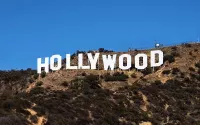
Los Angeles is the most populous city in California and...
Arizona is a landlocked state in the Southwestern U S...

Chicago is the most populous city in Illinois and the...
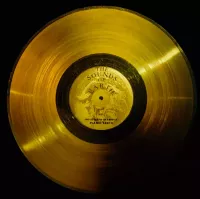
Music is a cultural universal involving the arrangement of sound...
Trending
Alex Highsmith is a professional American football linebacker currently playing for the Pittsburgh Steelers in the NFL Before joining the...
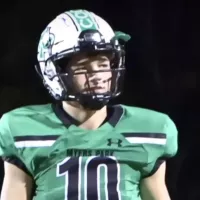
6 months ago Drake Maye and Wife Ann Michael Donate Wedding Gifts to Local Shelter
Jaylen Waddle is a professional American football wide receiver currently playing for the Miami Dolphins in the NFL He was...
2 months ago Michael Pittman Jr. injury update: Status against Falcons in Week 10; Set to play.
7 months ago Stefanski Praises Sanders; Browns QB Competition Remains United, Not Dysfunctional This Offseason.
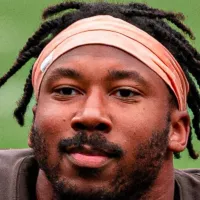
5 months ago Myles Garrett sets Super Bowl goal, Stefanski faces pressure, DPOY odds revealed.
Popular

XXXTentacion born Jahseh Dwayne Ricardo Onfroy was a controversial yet...
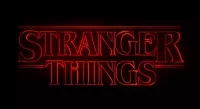
Stranger Things created by the Duffer Brothers is a popular...
The Kennedy Center Honors are annual awards recognizing individuals and...
Turning Point USA TPUSA is an American nonprofit organization founded...

Candace Owens is an American conservative political commentator and author...

William Franklin Graham III commonly known as Franklin Graham is...